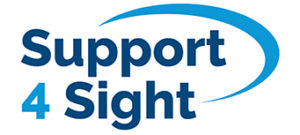How bad does your visual impairment need to be to be registered as a blind or partially sighted person?
Your eye specialist (a consultant ophthalmologist) will decide if you can be certified as severely sight impaired (blind) or sight impaired (partially sighted).
will decide whether you meet the criteria for certification by measuring your:
- Visual acuity – your central vision, the vision you use to see detail.
- Visual field – how much you can see around the edge of your vision, while looking straight ahead.
Your visual acuity is measured by reading down an eye chart while wearing any glasses or contact lenses that you may need, so remember to bring them to your appointment. The test for visual acuity is known as a Snellen test. Your field of vision is measured by a “visual field test”. There are guidelines about the level of sight needed to be registered severely sight impaired (blind) or sight impaired (partially sighted).
After the ophthalmologist has assessed your vision and your eyes, they will decide if you are eligible for your sight loss to be certified. The consultant can certify you as either severely sight impaired (blind) or sight impaired (partially sighted) by completing the Certificate of Vision Impairment (CVI) in England and Wales.
If you have a good visual acuity, you will usually have had to have lost a large part of your visual field to be certified as severely sight impaired (blind) or sight impaired (partially sighted)
Alternatively, if you have all your visual field, you will usually have to have a very poor visual acuity to be certified as severely sight impaired (blind) or sight impaired (partially sighted).
Generally, to be certified as severely sight impaired (blind), your sight has to fall into one of the following categories, while wearing any glasses or contact lenses that you may need:
- Visual acuity of less than 3 / 60 with a full visual field.
- Visual acuity between 3 / 60 and 6 / 60 with a severe reduction of field of vision, such as tunnel vision.
- Visual acuity of 6 / 60 or above but with a very reduced field of vision, especially if a lot of sight is missing in the lower part of the field.
To be certified as sight impaired (partially sighted) your sight has to fall into one of the following categories, while wearing any glasses or contact lenses that you may need:
- Visual acuity of 3 / 60 to 6 / 60 with a full field of vision.
- Visual acuity of up to 6 / 24 with a moderate reduction of field of vision or with a central part of vision that is cloudy or blurry.
- Visual acuity of 6 / 18 or even better if a large part of your field of vision, for example a whole half of your vision, is missing or a lot of your peripheral vision is missing.
Your ophthalmologist will carry out these tests on both of your eyes. If you have lost the sight in one of your eyes, your ophthalmologist will not be able to certify you as sight impaired or severely sight impaired unless you have significant sight loss in your other eye. This is because your other eye will largely compensate for the loss of sight in the affected eye.
Your eye specialist might tell you that you cannot be certified at present. This could be for one of three reasons:
- You haven’t met the criteria for visual acuity and field of vision.
- They feel your sight loss isn’t permanent.
- If you are already receiving treatment that could improve your sight, they may wish to wait for the outcome of that treatment.
The eye specialist then sends copies of the certificate to you, your GP and your local social services department. You can then choose if you wish to be registered with your local social services.
Registration can provide access to services, state benefits and rehabilitation.




